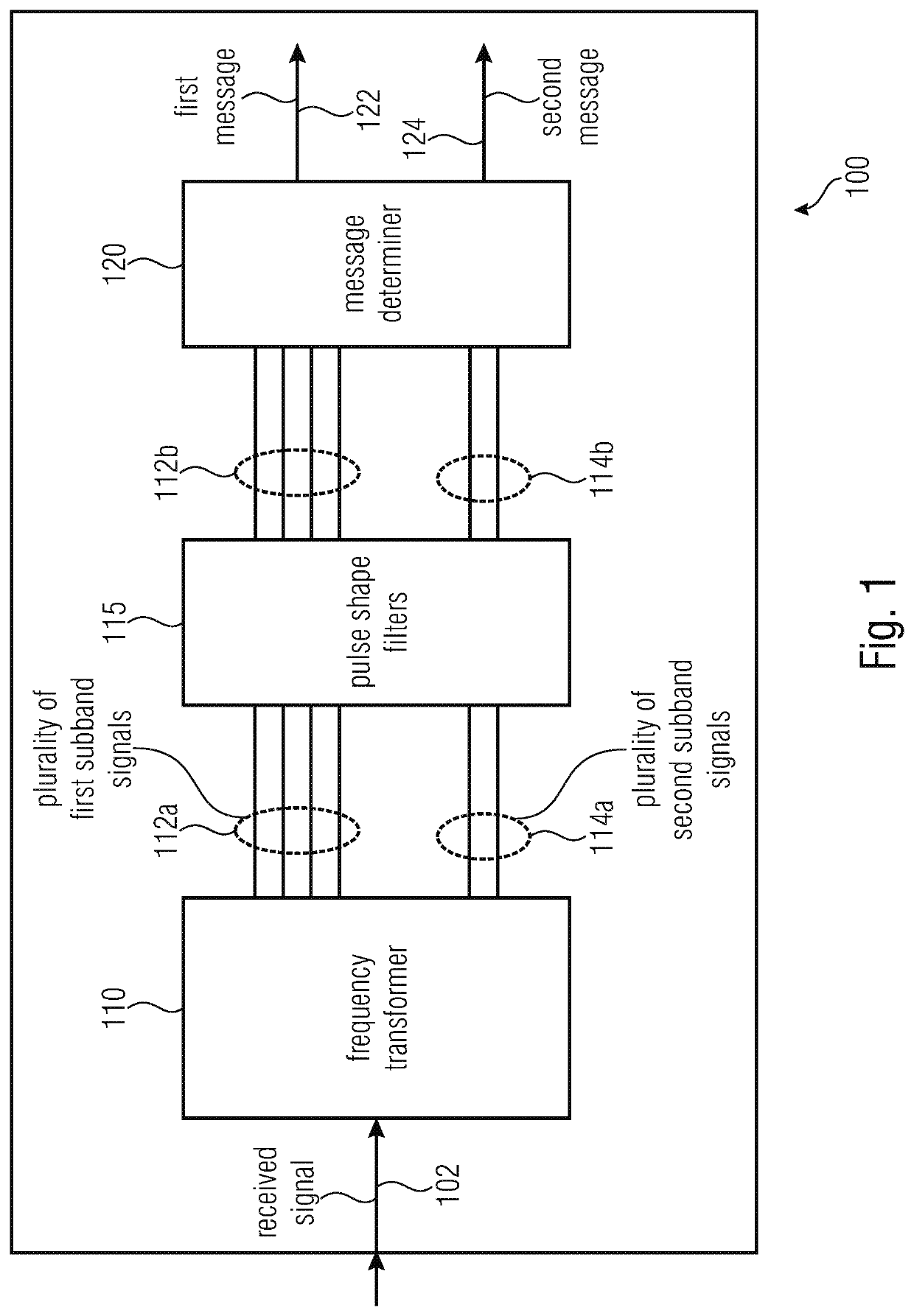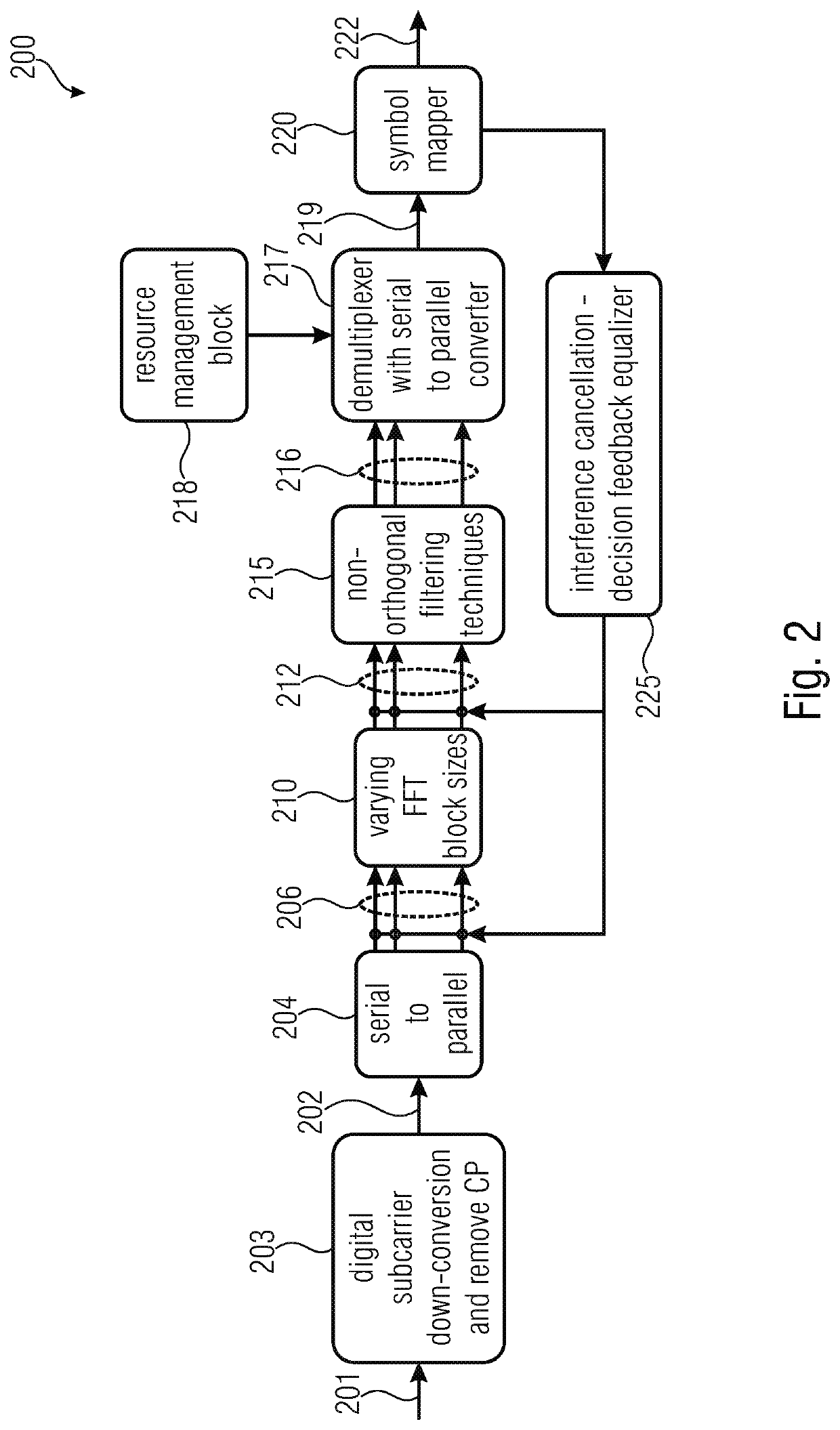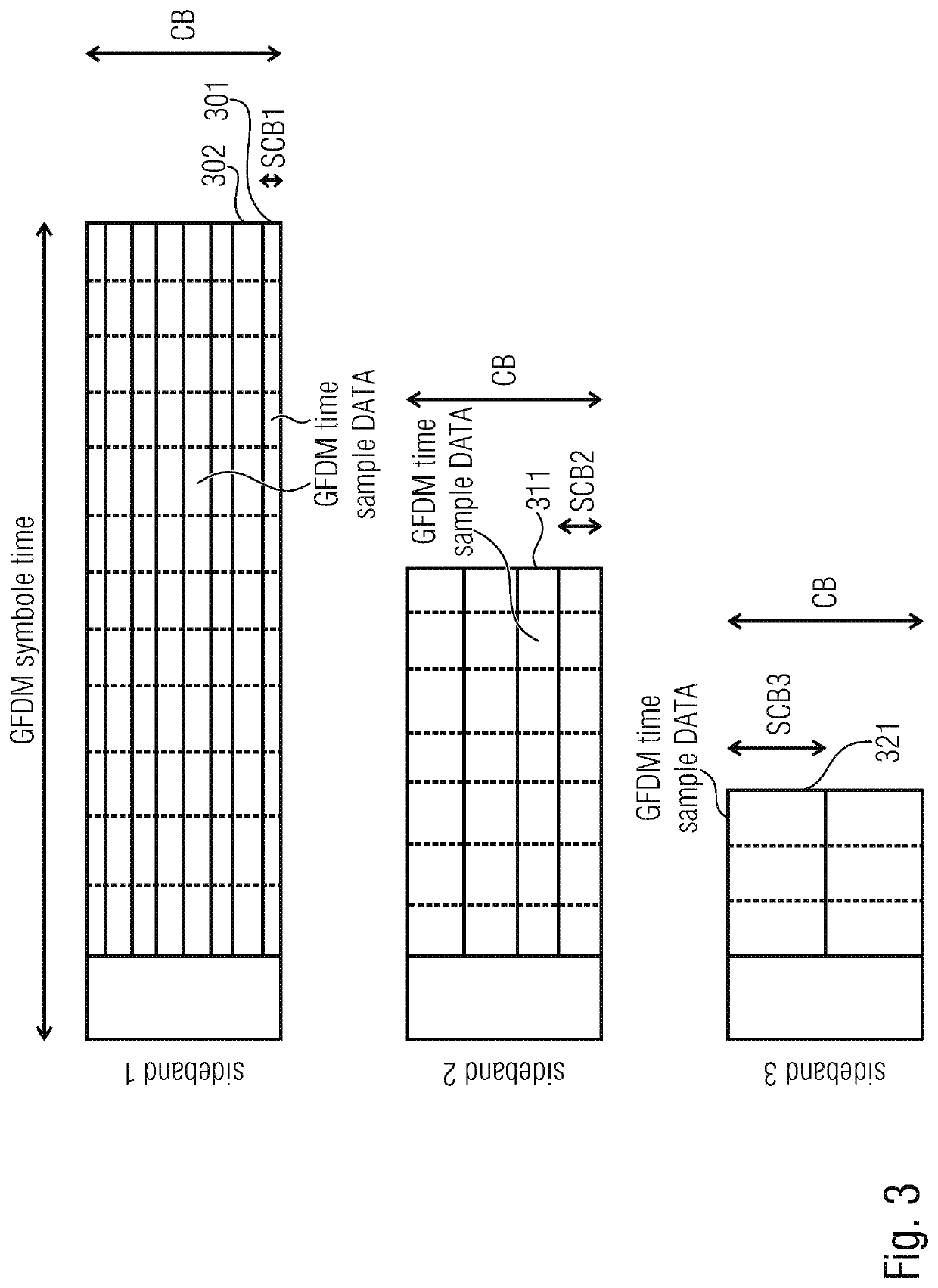Receiver, transmitter, communication system for subband communication and methods for subband communication
a communication system and subband technology, applied in the direction of transmission, modulated carrier system, transmitter/receiver shaping network, etc., can solve the problem of complex receiver structure, inability to eliminate the effect of doppler frequency spread, and high frequency synchronization error risk of standard transmission techniques, etc. problem, to achieve the effect of simplifying the reception or determination of messages, reducing transmission overhead, and low peak-to-average power ratio
- Summary
- Abstract
- Description
- Claims
- Application Information
AI Technical Summary
Benefits of technology
Problems solved by technology
Method used
Image
Examples
Embodiment Construction
[0050]FIG. 1 shows a receiver 100 according to embodiments of the invention. The receiver comprises a frequency transformer 110, pulse shape filters 115 and a message determiner 120.
[0051]A received signal 102 having a communication bandwidth is fed to the frequency transformer 110 to obtain a plurality of first subband signals 112 and / or to obtain a plurality of second subband signals 114. Each subband of the plurality of first subband signals 112 comprises a first bandwidth and each subband of the plurality of second subband signals 114 comprises a second bandwidth, wherein the first bandwidth differs from the second bandwidth. The plurality of first subband signals 112a and / or the plurality of second subband signals 114b is provided to the pulse shape filters 115 to revert a filtering commonly performed in a transmitter. Furthermore, the filtered plurality of first subband signals 112b and the filtered plurality of second subband signals 114b are passed to the message determiner ...
PUM
 Login to View More
Login to View More Abstract
Description
Claims
Application Information
 Login to View More
Login to View More - R&D
- Intellectual Property
- Life Sciences
- Materials
- Tech Scout
- Unparalleled Data Quality
- Higher Quality Content
- 60% Fewer Hallucinations
Browse by: Latest US Patents, China's latest patents, Technical Efficacy Thesaurus, Application Domain, Technology Topic, Popular Technical Reports.
© 2025 PatSnap. All rights reserved.Legal|Privacy policy|Modern Slavery Act Transparency Statement|Sitemap|About US| Contact US: help@patsnap.com



